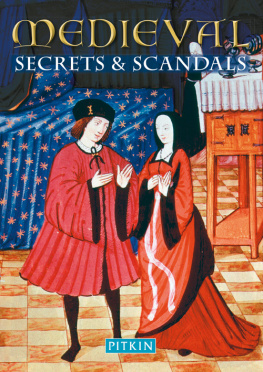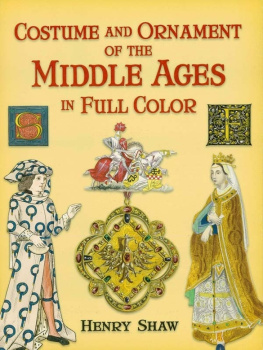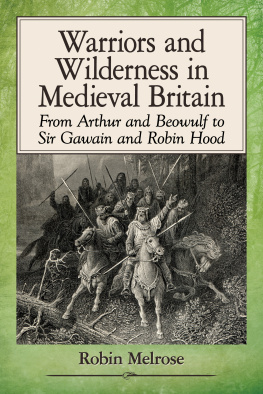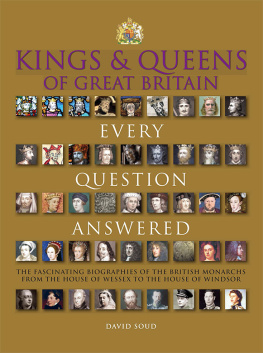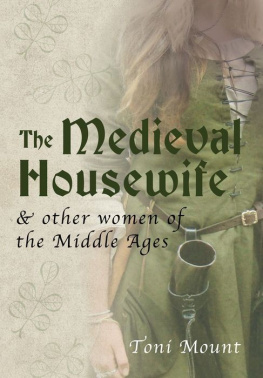
CONTENTS
Alfred the Great lays the foundations of the English kingdom.
1057 Death of Macbeth, King of Scots.
1096 First Crusade to the Holy Land (Palestine); eight Crusades take place, the last in 1270.
1170 Murder of Thomas Becket at Canterbury.
1265 Simon de Montforts parliament is created in England.
13371453 Hundred Years War between England and France.
1381 The Peasants Revolt.
1415 Henry V wins the Battle of Agincourt in France.
1483 Edward IV dies, and Princes in the Tower disappear.
1488 Battle of Sauchieburn; James III loses the Crown of Scotland to his son.
1016 Death of Ethelred II, the Unready.
1066 The Normans invade Anglo-Saxon England.
1139 Civil war in England; it ends when Henry II becomes king in 1154.
1215 Magna Carta is sealed by King John.
1314 Battle of Bannockburn; the Scots, led by Robert Bruce, defeat the English.
1348 The Black Death.
1399 Henry Bolingbroke overthrows Richard II.
1455 Wars of the Roses begin in England.
1485 Battle of Bosworth; Henry VII becomes the first Tudor King of England.
1492 Columbus sails to America and a new world is opened up.
T he Middle Ages, or medieval period, spans the centuries from the 400s to the 1500s. In Britain, visible legacies are castles and cathedrals, but remembered from history and legends are kings and queens, and fabled heroes such as Robin Hood. Power lay with the Court and the Church, but rumour and gossip rippled around water-well and market place, for that was how news spread. Around the kings, whose powers were as many as their human frailties, murder, mischief and muck-raking simmered. Here are whispers of old passions and quarrels: murderous kings and queens, scheming lords and ladies, brutal barons and worldly clerics, witchcraft and magic. Many secrets and scandals were concealed behind the rich tapestries of the medieval pageant.

Court ladies watch jousting knights, from a 14th-century manuscript.
M edieval courts were seldom peaceful, for a hasty quarrel could spark years of blood-feud and murder. Violence was almost casual, even though there were laws to control it in Anglo-Saxon England the payment of wergild was compensation for a death. To defy royal law was risky, but sometimes it was the king who suffered. English king Edmund the Elder was murdered in 946 by Leofa, an outlaw who turned up at a Gloucestershire party, possibly to argue his case. Edmund tried to throw him out and was knifed.
More usually kings fell victim to ambitious relatives. In 978 King Edward, only 16, was murdered at Corfe, almost certainly by his stepmother Aelfthryth. She allegedly gave him poison, stabbed him (or had him killed) and installed her son Ethelred as king. Edwards martyred bones were kept at Shaftesbury Abbey until the 1500s when they disappeared. They were rediscovered in 1931, and after some dispute ended up in the care of the Russian Orthodox Church.
DONT TRUST THE GRASPER
Ethelred had disgraced himself as a baby, by peeing into the font at his baptism. A bad sign. Ethelred the unready was more accurately unraed, Anglo-Saxon for ill-advised. His worst adviser was Edric Streona, known to contemporaries as Grasper: ambitious, tenacious and treacherous in equal measure. Edric and Ethelred paid off invading Vikings, and when bribes failed, ordered the St Brices Day Massacre (1002) of Viking settlers in the Danelaw. This provoked King Sweyn of Denmark to invade England, and Ethelred fled to Normandy. Edric clung on and, after Ethelreds death in 1016, threw in his lot with the new English hope Edmund Ironside, only to desert him in battle and then (it was rumoured) murder him. In the most lurid version of events, Edric arranged for his son to hide in the pit beneath the royal privy. When Edmund sat above, he was stabbed from below. King Sweyns son Cnut, now King of England, considered Edrics trustworthiness. Cnut had him killed within a year a case of the biter bit, perhaps?

King Ethelred, unready and ill-advised.
LADY GODIVAS RIDE
This famous medieval shocker of a bareback ride through Coventry was first recounted by Roger of Wendover in the early 1200s. If it happened at all, it happened in 1043. Godiva (Godgifu) was the wife of Earl Leofric of Mercia. Angered by the killing of two tax-gatherers, Leofric upped the tax-burden, and his unhappy people appealed to Godiva. She argued with Leofric and, in exasperation, he challenged her to ride naked through Coventry if youre so concerned. When she did, her flowing hair preserving her modesty, all the citizens shut their windows, except one Peeping Tom, who was struck blind.
For an Anglo-Saxon noblewoman to appear naked is most unlikely; medieval women were normally covered up, including their hair and neck. In a public act of penitence, Godiva might have taken off her jewels, brooches and gold hair pins for her ride through Coventry, which was still only a big village rather than the city it later became.

The statue of Lady Godiva in Coventry.
PERILS OF LONDON
Henry Is London was a green city, with fields, watermills and thickets where wild boar and deer ran free. People went to the smooth field (Smithfield) for the horse sales, or enjoyed winter ice-skating and sliding on the frozen swamp of Moorfields. Such pleasant activities were marred by two pests of London life immoderate drinking and the risk of fire incinerating the wooden houses.
SQUALID SONS OF CNUT
King Cnut, famous for bellowing at the incoming tide to demonstrate the limits of regal power to sycophantic courtiers, became a pious king with two impious sons. Harold I (Harefoot), who succeeded Cnut in 1035, was the son of the late kings mistress, Aelfgifu of Northampton. Cnuts wife Queen Emma (Ethelreds widow) had wanted her son Harthacnut to be king, but he was away in Denmark and Harold got in first. Harold banished Emma and had her son Alfred (brother of Edward the Confessor) blinded then shut away in a monastery. When Harold died in 1040, Harthacnut had his body dug up and thrown into the river. The new king was just as vile however, plundering the property of the citizens, and died unlamented in 1042 of a terrible convulsion after binge-drinking at a wedding.
WHO LIED FIRST?
With Cnuts sons gone, the Anglo-Saxon dynasty resumed with Edward the Confessor (104266). He did not look or act like a warrior king he was very tall, very thin, very pale, and spent most of his time in prayer. Cajoled, or forced, to marry the daughter of Earl Godwin, the king was said to have refused conjugal relations. The union was, unsuprisingly, childless. With no heir, favourites to succeed Edward were Earl Godwins son Earl Harold and the Norman Duke William, with Harold Hardrada of Norway an outside bet. William said hed been promised the crown by Edward in 1051. Furthermore, in 1064 Harold had sworn not to oppose him. Harold argued that any promise was made under duress, since he was Williams prisoner at the time, and that Edwards deathbed wish in his favour superseded all others. Maybe neither was lying?
Next page
